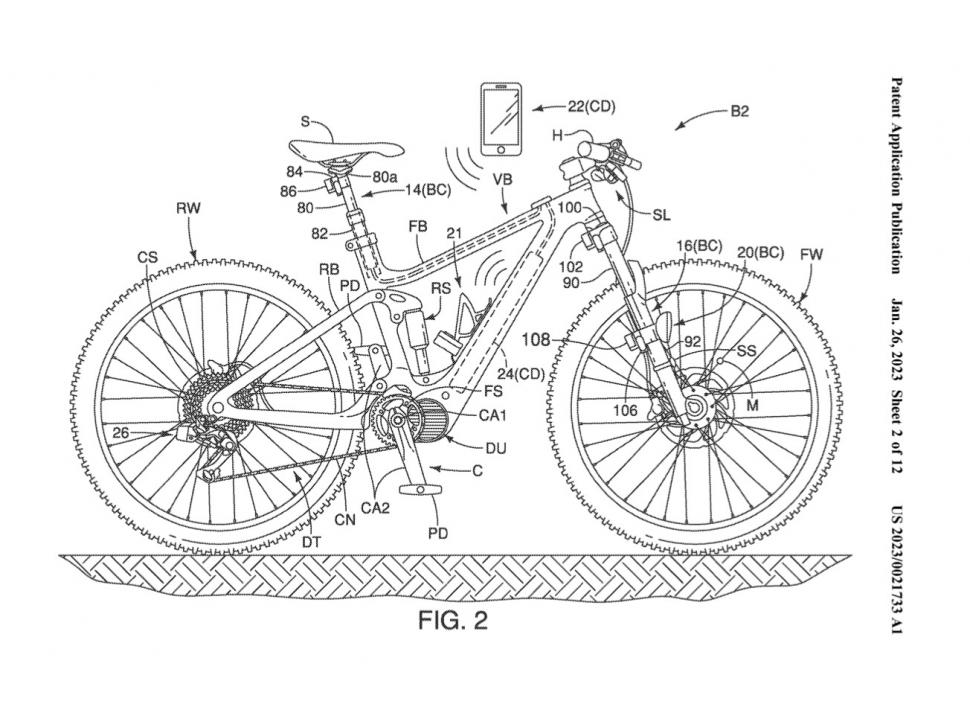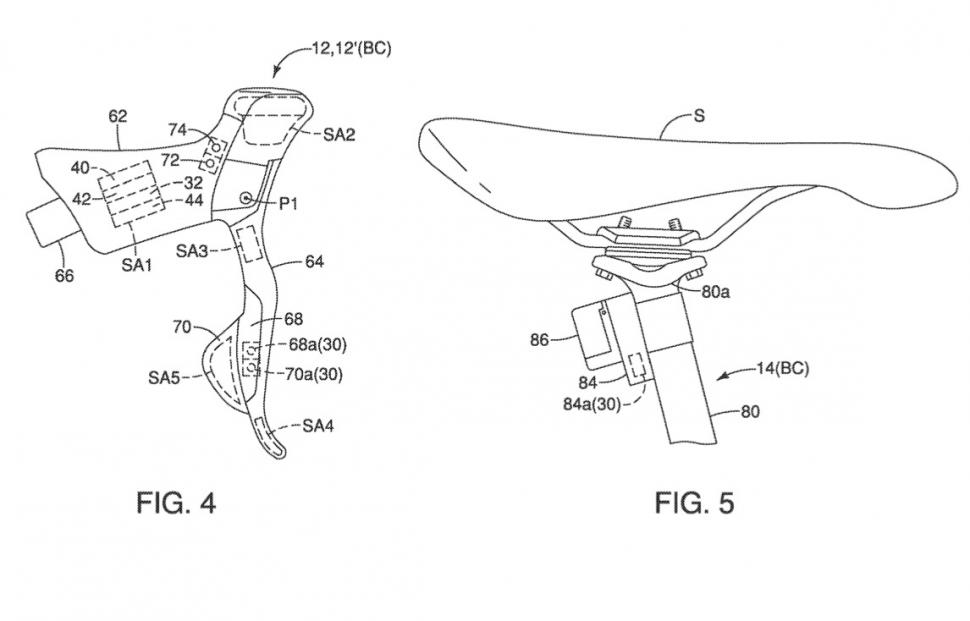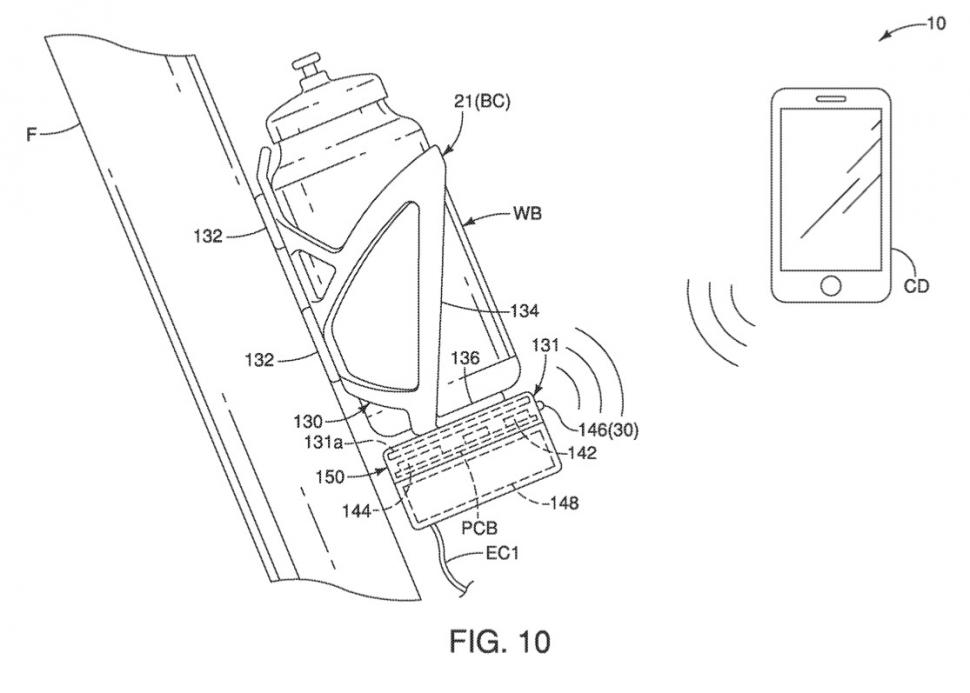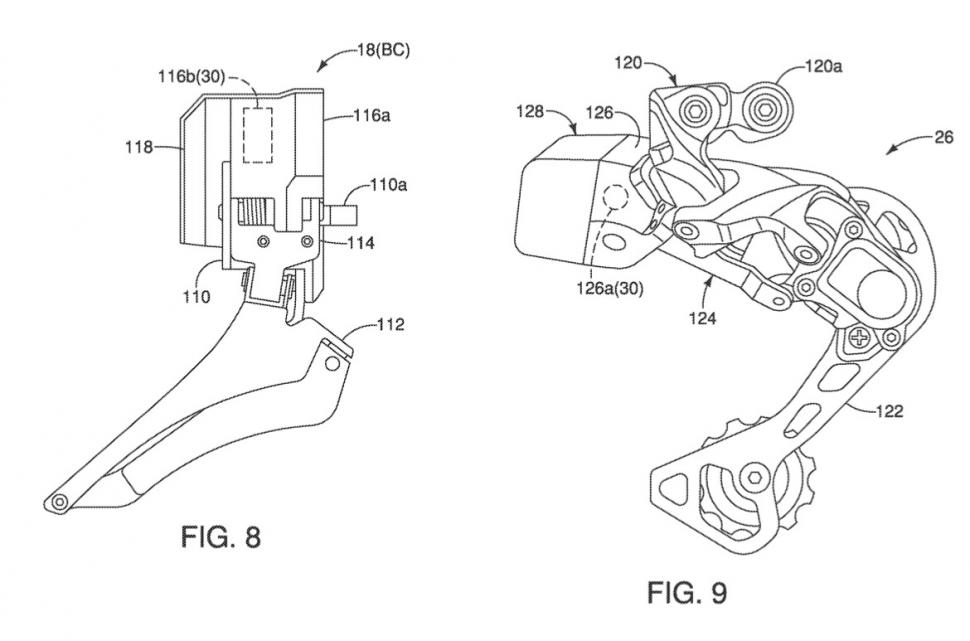- News
- Reviews
- Bikes
- Components
- Bar tape & grips
- Bottom brackets
- Brake & gear cables
- Brake & STI levers
- Brake pads & spares
- Brakes
- Cassettes & freewheels
- Chains
- Chainsets & chainrings
- Derailleurs - front
- Derailleurs - rear
- Forks
- Gear levers & shifters
- Groupsets
- Handlebars & extensions
- Headsets
- Hubs
- Inner tubes
- Pedals
- Quick releases & skewers
- Saddles
- Seatposts
- Stems
- Wheels
- Tyres
- Tubeless valves
- Accessories
- Accessories - misc
- Computer mounts
- Bags
- Bar ends
- Bike bags & cases
- Bottle cages
- Bottles
- Cameras
- Car racks
- Child seats
- Computers
- Glasses
- GPS units
- Helmets
- Lights - front
- Lights - rear
- Lights - sets
- Locks
- Mirrors
- Mudguards
- Racks
- Pumps & CO2 inflators
- Puncture kits
- Reflectives
- Smart watches
- Stands and racks
- Trailers
- Clothing
- Health, fitness and nutrition
- Tools and workshop
- Miscellaneous
- Buyers Guides
- Features
- Forum
- Recommends
- Podcast
TECH NEWS
 2023 Shimano non-contact patent application - 1
2023 Shimano non-contact patent application - 1Will Shimano offer wireless recharging for electric components?
Shimano is working on a non-contact system of charging bicycle components, according to a patent application (US 2023/0021733 AI) that has just been published.
The patent application refers to road bikes, mountain bikes and various other types of bikes, and discusses a ‘non-contact charging method’ for components with electronic shifting such as a front derailleur, light, adjustable seat post and adjustable suspension. It specifically mentions that this system isn’t intended to charge a rear derailleur or the drive unit of an electric bike.
Current electrical bike components – derailleurs, adjustable seat posts, and so on – require an onboard power source (one or more batteries) that needs to be periodically replaced or recharged.
However, Shimano says, “Recently, some electrical devices are charged using a wireless charging technique that uses an electromagnetic field to transfer energy between two or more devices based on inductive coupling.
> Your complete to Shimano road bike groupsets
“The device to be charged receives the electromagnetic energy through resonant inductive coupling and converts the electromagnetic energy to electrical energy to charge a power supply of the device to be charged.”
Yes, as usual, the language is convoluted but the patent application suggests that Shimano is at least considering bringing a non-contact charging system to the cycling world.
“The bicycle component basically comprises an electrical part a rechargeable power source and a non-contact charging portion,” Shimano says.
“The rechargeable power source is electrically connected to the electrical part. The non-contact charging portion is configured to wirelessly receive external electric power and to supply the external electric power to the rechargeable power source.
“The rechargeable power source of the bicycle component can be conveniently charged without using an electrical cable.”
Shimano describes many other details about exactly how the system would work. The non-contact charging device could be held in a bike’s bottle cage, for example, it could be “a mobile device that is carried by the user”, or it could be the battery unit of an e-bike.
As mentioned, the system could be used to control electrically adjustable suspension – “the stiffness and/or stroke length of the… suspension can be adjusted,” says Shimano – or a front derailleur.
As you use each component its power will be depleted, of course, so sensors will ensure it is automatically recharged from the charging device.
Shimano outlines how the external non-contact charging device “can be placed within a few centimetres (about 4cm or less) of the non-contact charging coil of a bicycle component”.
It also says, “On the other hand, the non-contact charging coil can be configured to use magnetic resonance, so that the non-contact charging devices can be one or two meters away from the bicycle components.”
Everything is controlled via wireless communication and, believe us, there’s a whole lot of depth here – 29 pages of it, to be precise.
We've not reported on anything similar from other brands here on road.cc but Cycling Industry News covered the development of wireless electric bike charging from Intis in September 2021.
As we always point out with anything patent-related, there’s no guarantee that these plans will ever come to fruition. Shimano applies for – and is granted – loads of patents every year, many of which never make it off the computer screen.
It seems to us that a non-contact charging system would offer few benefits, especially given that almost all wires are already hidden internally, but what do you think? A step forward or needless complication? Let us know in the comments below.
Mat has been in cycling media since 1996, on titles including BikeRadar, Total Bike, Total Mountain Bike, What Mountain Bike and Mountain Biking UK, and he has been editor of 220 Triathlon and Cycling Plus. Mat has been road.cc technical editor for over a decade, testing bikes, fettling the latest kit, and trying out the most up-to-the-minute clothing. He has won his category in Ironman UK 70.3 and finished on the podium in both marathons he has run. Mat is a Cambridge graduate who did a post-grad in magazine journalism, and he is a winner of the Cycling Media Award for Specialist Online Writer. Now over 50, he's riding road and gravel bikes most days for fun and fitness rather than training for competitions.
Latest Comments
- Rome73 10 sec ago
https://thebikeproject.co.uk/ this project in London does the same - if anyone has any unused bikes they would like to donate.
- Johnny Rags 42 min 41 sec ago
Yeah, whatever. Shut up and fuck off Farage, you fucking bell end.
- Aluminium can 6 hours 55 min ago
So there's electronics and computers and motors for gear changes and pumping up or deflating tyres. Why not just motorise the whole bike and be...
- ktache 8 hours 52 min ago
Quest are showing the Paris Roubaix highlights at 11 both days.
- chrisonabike 9 hours 37 min ago
Pretty sure a lot of that "more space for motor vehicles" was because fewer motor vehicles (also marginally "smaller motor vehicles")....
- David9694 10 hours 24 min ago
I get the impression he represented himself, came over as a bit of an ass and received a ban, when a lawyer might have got him spared that.
- Laz 10 hours 35 min ago
OMG- that's so self centred....what about the brotherhood and sisterhood of enjoying a ride and sharing a happy wave with a fellow rider out...
- thax1 11 hours 2 min ago
Cycliq certainly seemed to let a lot of people down in the early days. I held off until the 12 Sport came out, but have been impressed....
- ktache 11 hours 3 min ago
My better half seems to like giving me pressies of Rapha clothing. I am wearing their casual hoodie right now, and very nice it is too. First off...
- thax1 11 hours 14 min ago
Push on through foot numbness and you then arrive at agonising foot cramp....




Add new comment
12 comments
My mechanical shifters are 'recharged wirelessly' when I eat food.
Isn't it manual recharging when you put food in your mouth or do you always throw food up in the air and catch it?
Personally, I'd rather have wired recharging for bikes as wireless recharging suggests that you either stand there holding the wireless charging pad close to the device or duck tape it in place. With a wire, you just plug it in and can leave the charger sat on the floor or wherever.
It's not quite clear how they envisage this being used, but I can see a few scenarios where it might help:
There is a separate, removable battery pack (or similar) that slots into place on the bike and wirelessly transfers power to the bike's components. Essentially similar to many ebikes, but power transfer is wireless which reduces the need for exposed electrical contacts. This would be useful if you don't have power where your bike is usually stored.
As many phones now offer wireless charge sharing, if your bike runs out of charge in the middle of nowhere, you could top it up from your phone to get home.
The patent mentions the suggestion that "the non-contact charging devices can be one or two meters away from the bicycle components". If true, this would open the potential for e.g. a "charging zone" within your home/garage - so you neither have to plug the bike in nor hold the wireless charger right next to it. You could simply leave the bike in the general vicinity of the charging device and it would be recharged. Also potentially allows simultaneous charging of several bikes.
I can see that recharging with your phone might be useful, but am sceptical about your other two uses. An ordinary battery pack can easily be used to charge up bikes and a wireless charging zone sounds useful, but overkill for most people as it'd likely cost more and bike components don't really need charging that often.
That's the key I think, even my nine-year-old Di2 battery only needs recharging about once every 1500 miles, which for me is about once every two months, it just wouldn't be worth the expense or the space to have a wireless charging dock in place for when I needed it every eight weeks.
yes long enough to make it conveniently easy to forget to charge regularly, best just do it once a month.
Although I have found my Di2 no longer lasts anywhere near that long, I think I hav isolated the issue to the rear derailleur draining power when connected, even while not riding.
Check (or get someone to check) that it's not sitting on the H or L limit screw, thereby never going to sleep properly. A common mistake with setting up Di2 is setting the limit screws before the micro-adjust (as with mechanical you would do the limit screws before cable tension), with Di2, do the micro-adjust first then the limit screws, you can then make sure that it's not touching either at rest.
not in top or botom gears, so limit screws unlikely to be a factor. Also I did not have this problem for 3 years, and have a policy of not f***ing with things that work, so the limit screws have not been adjusted to cause a new issue.
It could be the battery failing as they don't last forever. It could also be a dodgy cable, but that's unlikely unless you know that it's been damaged.
I thought it was the battery first, charged it up, disconnected the battery, waited some days, plugged in; still fully charged.
left plugged in; battery drained 20% overnight
unplugged the rear mech held charge again
plugged in the rear mech battery drained again going flat in 2 days
I don't see how a cable could be damaged, UNLESS somehow the battery landed on it, as I found it was no longer secure in the seatpost, but had dropped down the seat tube. But I would expect it to encounter the front mech cable before the rear mech cable.
seems sensible as the bike battery is probably (electrically) smaller than a phone battery given that it charges much quicker and uses less of my power bank even though it is significantly larger physically
surely this would be very inefficient, I'm not an electrical engineer but it seems to me that the further away you are charging the device, the more energy is lost due to missing the target.
You're right, wireless charging isn't very efficient. It's less of an issue with bike batteries as they're usually smaller and don't require much juice, but the efficiency will drop as the distance increases so ideally you want to position the charging coil right next to the device.